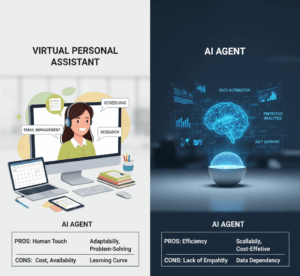
Exploring Staffing Strategies: Outsourcing vs. In-House
In today’s dynamic business landscape, UK companies face pivotal decisions about the most efficient ways to manage their staffing needs. Understanding the distinct approaches of outsourcing and in-house staffing is essential for aligning a company’s staffing strategy with its operational goals and long-term vision.
What is an Outsourcing Staffing Solution?
Outsourcing involves contracting external organisations or individuals to handle specific business functions instead of employing staff directly. This model is particularly beneficial for accessing specialised skills, reducing costs, and increasing operational flexibility. Outsourcing allows businesses to focus on core activities while external experts manage non-core tasks efficiently.
What is In-House Staffing?
In-house staffing refers to employing individuals under the company’s payroll to perform all operational tasks. This approach provides businesses with greater control over their employees, processes, and company culture. In-house staffing is ideal for organisations that prioritise direct oversight, cultural integration, and long-term employee development.
With these insights, businesses can better evaluate which staffing model best suits their needs, considering factors such as cost, control, flexibility, and strategic importance of tasks to be managed.
The Case for Outsourcing
Analysis of Cost Differences: Salaries, Benefits, and Other Compensations
Outsourcing can lead to substantial cost savings for businesses, primarily through lower wages due to the cost of living differences between countries. For example, companies can save up to 70% on employment costs by outsourcing to regions with a lower cost of living while maintaining quality, as skills and educational levels are comparable to those in the West . Additionally, outsourcing eliminates the need for expenses related to recruitment and training, as well as infrastructure costs such as office space and equipment .
Case Study: UK Company Cost Savings through Outsourcing
A practical illustration of this is seen in UK companies that outsource customer service or IT support, where not only do they benefit from reduced labour costs but also from decreased overheads for training and infrastructure, leading to overall enhanced profitability and flexibility in budget allocation .
Access to Expertise
Benefits of Accessing Specialized Skills
Outsourcing enables companies to access a broader range of specialised skills, providing a flexible staffing solution that can be tailored to meet specific project needs or operational demands. This access is particularly valuable for roles that require expertise but do not necessitate full-time positions within the company, thus optimising cost and resource allocation.
Example of Niche Skill Sets Accessed Through Outsourcing
Particularly in the realms of office administration, Human Resources (HR), and virtual assistance, outsourcing has proven to be a strategic move for many UK businesses. For instance, outsourcing HR functions allows companies to benefit from top-tier expertise in areas such as recruitment, payroll management, and compliance with employment laws without the overhead associated with maintaining a full-time, in-house HR department. Similarly, virtual assistants can handle a variety of tasks—ranging from scheduling and communication management to customer support—enabling businesses to focus on core activities while ensuring administrative tasks are managed efficiently and professionally . Outsourcing these roles not only offers access to expert capabilities but also enhances operational flexibility and scalability, aligning with the strategic staffing solutions necessary for modern business dynamics.
Flexibility and Scalability
Outsourcing offers remarkable flexibility, allowing businesses to scale operations up or down without the long-term commitments associated with hiring permanent staff. This can be particularly valuable in industries with fluctuating workloads or where seasonal peaks are prominent.
Example of How Businesses Can Scale Quickly with Outsourcing
An excellent example of this flexibility is seen in sectors like retail and e-commerce, where companies may need to significantly increase their customer service capacity during busy periods like holidays. Outsourcing enables these companies to adjust their workforce size quickly and efficiently, ensuring that customer satisfaction and service levels remain high without permanently increasing their overhead costs.
Outsourcing can offer significant advantages in terms of cost efficiency, access to specialised expertise, and operational flexibility, making it an attractive option for many businesses looking to optimise their staffing solutions.

The Case for In-House Staffing
Advantages of Having an In-House Team for Better Control Over Business Processes
Having an in-house team allows for greater control over business operations and decision-making processes. This control is crucial for companies that handle sensitive information, require fast decision-making, or need to maintain high levels of customization in their service or product offerings. The direct oversight of day-to-day activities ensures that standards are maintained, and adjustments can be made swiftly, providing a reliable and consistent staffing solution.
Case Study: UK Business Improving Project Outcomes with an In-House Team
A UK-based technology firm found that by maintaining an in-house software development team, they could accelerate their product innovation cycle. The close collaboration between the development team and the product management team allowed for real-time feedback and iterative testing, leading to a 40% reduction in time-to-market for new features compared to previous outsourced projects.
Company Culture and Loyalty
Impact of In-House Teams on Company Culture and Employee Loyalty
In-house staffing fosters a strong company culture and builds loyalty, which are critical for long-term business success. Employees who are directly part of the company may feel more connected to the business’s goals and are likely to have higher job satisfaction and loyalty. This can lead to lower turnover rates and a more engaged workforce.
Example of a Company with Strong Culture Due to Long-Term Employees
A notable UK retail company has been highlighted for its strong organisational culture, which is largely attributed to its long-term in-house employees. These employees have developed deep ties to the company’s mission and values, which have permeated throughout the workforce, enhancing teamwork and increasing overall productivity.
Long-Term Cost Benefits
While the initial investment in in-house staffing can be higher due to recruitment, training, and salaries, the long-term benefits often outweigh these costs. In-house teams can lead to significant savings in terms of reduced turnover, lower recruitment costs over time, and the accumulation of institutional knowledge that can drive efficiencies.
Discussion on Training Costs vs. Long-Term Employee Value
Investing in the training and development of in-house staff creates a more competent and skilled workforce. Although the upfront costs of training are significant, the long-term value of employees who can perform at higher levels and contribute to continuous improvement initiatives is substantial. For example, a UK manufacturing company reported that its investment in continuous training programs has increased productivity by 25% over five years, demonstrating the payoff of developing internal capabilities.
In summary, while outsourcing offers flexibility and cost benefits, in-house staffing solutions provide substantial advantages in terms of control, cultural cohesion, and long-term financial gains. This holistic approach to staffing ensures that businesses can maintain a stable and committed workforce, aligned closely with the organisation’s long-term objectives and values.
Comparing the Risks
Risks of Outsourcing
Potential Issues with Confidentiality, Security, and Quality of Service
Outsourcing can introduce risks related to data confidentiality and security. When outsourcing, companies often have to share sensitive information with third-party vendors, which can increase the risk of data breaches. Additionally, the quality of services provided by external vendors may not always meet the high standards set by the in-house teams, potentially impacting the company’s reputation and customer satisfaction.
Risks of In-house Staffing
Challenges with Recruitment, High Turnover Rates, and Ongoing Training Costs
Maintaining an in-house team comes with its own set of challenges, primarily related to recruitment and retention. High turnover rates can disrupt business operations and lead to increased costs associated with hiring and training new employees. Additionally, the ongoing costs of training and developing staff to keep up with industry standards can significantly strain budgets.
Example of a Company Overcoming These Challenges
A UK technology startup managed to overcome these staffing solution challenges by implementing an innovative employee engagement program and a robust training system. The engagement program included flexible working conditions and performance incentives, which significantly reduced turnover rates. Their proactive training programs ensured that employees were well-equipped to handle evolving job requirements, turning these potential risks into a strategic advantage.
In both outsourcing and in-house staffing, managing the associated risks is crucial for maintaining operational stability and achieving long-term success. Each staffing solution comes with distinct challenges that require careful consideration and strategic planning to mitigate.
Conclusion
When choosing between outsourcing and developing in-house staffing capabilities, it is crucial to align the decision with your business’s strategic needs and the specific challenges you face in your industry. While outsourcing offers significant advantages such as cost savings, access to a global talent pool, and operational flexibility, in-house staffing brings unmatched control over processes, deep integration with company culture, and the potential for long-term employee development.
However, for many businesses, especially those needing flexible, scalable staffing solutions on-demand, the choice increasingly leans towards temporary staffing. This approach combines the benefits of both models—offering the flexibility of outsourcing with the control and integration of in-house staffing, tailored specifically for short-term projects or seasonal demands.
Reach Out to StaffNow for Premier Temporary Staffing Solutions
At StaffNow, we excel in providing top-tier temporary staffing solutions that cater specifically to the unique needs of different professions. We understand the nuances of temporary staffing, ensuring that you receive skilled, reliable, and flexible talent precisely when your business needs it.
Explore our offerings at StaffNow and discover how we can help you navigate the complexities of modern staffing with ease. Whether you’re looking to bolster your marketing efforts or need skilled temporary staff to handle peak periods, StaffNow is your partner in achieving business excellence. Contact us today, and let’s discuss how we can support your staffing requirements with our expert solutions.
Frequently Asked Questions (FAQ) About Outsourced vs. In-House Staffing Solutions
Outsourced staffing involves hiring external firms to handle specific business functions, providing flexibility and cost savings. In-house staffing means employing individuals directly within the organization, offering greater control over processes and fostering a strong company culture.
Outsourcing can lead to significant cost savings by reducing expenses related to recruitment, training, and employee benefits. In contrast, while in-house staffing may have higher initial costs, it can result in long-term savings through reduced turnover and increased employee loyalty.
Outsourcing provides access to a broader talent pool, especially for specialized skills that may not be available locally. In-house staffing may limit access to specialized skills unless the company invests in training or recruitment efforts.
In-house staffing generally offers better quality control due to direct oversight of employee performance. Outsourcing can pose challenges in maintaining consistent quality, but reputable providers implement quality assurance measures to mitigate these risks.
Outsourcing is highly flexible, allowing businesses to quickly scale their workforce based on project demands. In-house staffing requires more time and resources to adjust, making it less adaptable in rapidly changing environments.
In-house staffing facilitates a stronger cultural fit, as employees are selected based on their alignment with the company’s values. Outsourced staff may struggle with cultural integration, though some providers work to bridge this gap through training and management oversight.
Yes, outsourcing can present potential data security risks, especially if sensitive information is handled by external parties. However, many outsourcing firms invest in advanced security measures to protect client data.
The best solution depends on the specific needs of the business. Outsourcing can be beneficial for small businesses seeking cost savings and flexibility, while in-house staffing may be more suitable for those prioritizing control and cultural alignment.
Absolutely! Many companies adopt a hybrid approach, utilizing both outsourced and in-house staffing to leverage the benefits of each model while addressing their unique operational needs.
Businesses should evaluate their specific needs, industry context, and strategic goals. Consider factors such as budget, required expertise, control over processes, and the importance of cultural fit when making a decision.






